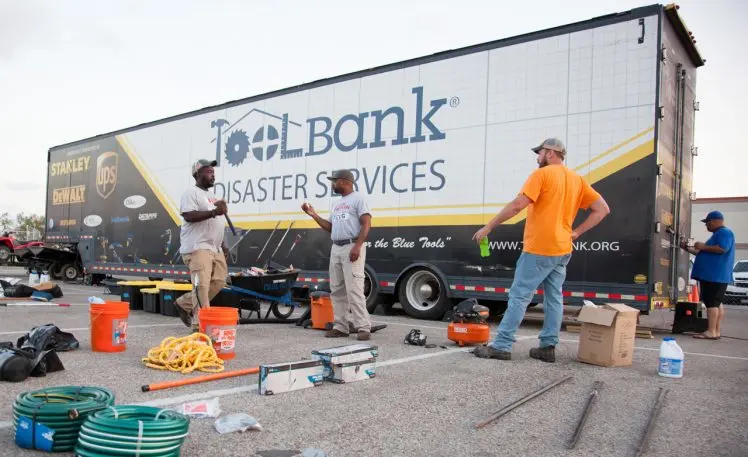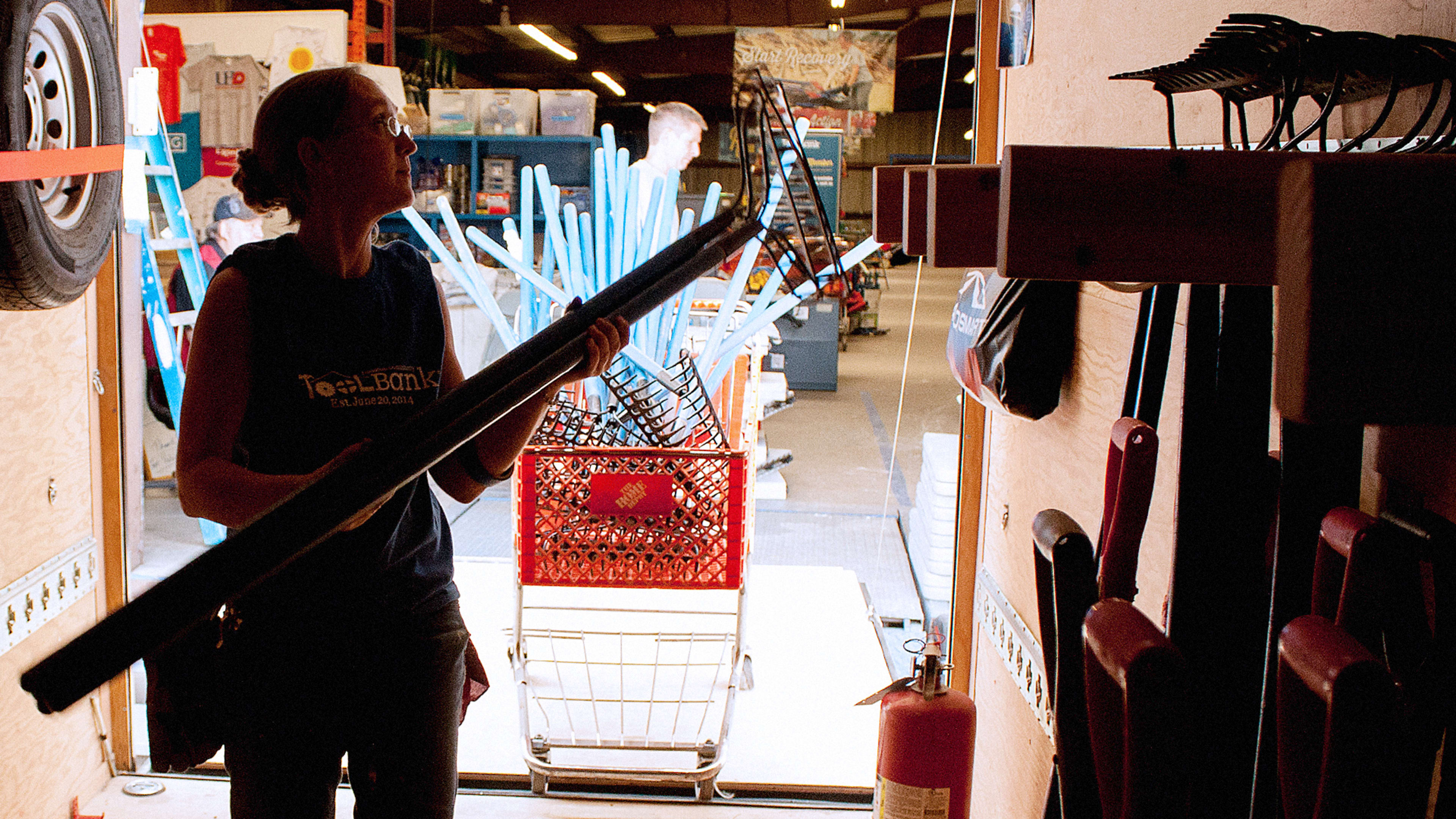When Hurricane Harvey made landfall in the Houston area in the last week of August, the disaster was met with an outpouring of relief efforts. Texas Gov. Greg Abbot estimated the costs would surpass Hurricane Katrina’s $100 billion in damages, and the funds flowed into Houston accordingly: The Red Cross set up a donation line; entrepreneurs like Jim McIngvale, CEO of Gallery Furniture, donated $50,000 and opened his stores as temporary housing; celebrities like Supernatural star Jensen Ackles brought in hundreds of thousands of dollars through crowdfunding platforms.
ToolBank USA, a nonprofit that was founded 26 years ago as the Atlanta Community ToolBank, also sprang into action. The organization houses a large inventory of tools available on rental basis to local nonprofits and charities, who can lease them for 3% of their retail value for up to eight weeks at a time. That small fee, says Patty Russart, executive director of the Atlanta Community ToolBank, is by no means enough to fund the whole organization, which pulls in most of its funding through grants, but it does create enough of an incentive for borrowing organizations to return the tools and keep the model viable as a consistent community resource.


Then, just a week later, Hurricane Irma struck Florida. Pulled in two directions, ToolBank began looking for potential resources to direct toward the devastation caused by the second storm. In Atlanta, they had three more pallets of tools set for UPS to deliver to Houston; they stopped those, and sent them instead to Florida. Matt Walenciak, ToolBank’s disaster services director, told the national organization that he would need to raise money to source another trailer, in addition to the one stationed in Aransas Pass, to reach hard-hit areas of Florida.

Even large-scale disasters like Harvey and Irma have a tendency to fade from the public consciousness after the initial destruction, but it’s the responsibility of organizations like ToolBank, Russart says, to remain responsive and available to the lengthy recovery process these communities are facing. “The response phase is the first three months, and that’s what we’re in now—we just need as many volunteers equipped with as many tools as possible, on the ground and clearing out these communities,” Russart says. But the recovery process, which encapsulates building and street reconstruction, will be years in the making, and require a different set of tools than those deployed for recovery. In the meantime, ToolBank will continue to pull in donations–of both tools and cash–to grow their resources and be ready to meet the demands of back-to-back disasters that are threatening to become the norm.
Recognize your brand’s excellence by applying to this year’s Brands That Matter Awards before the early-rate deadline, May 3.
